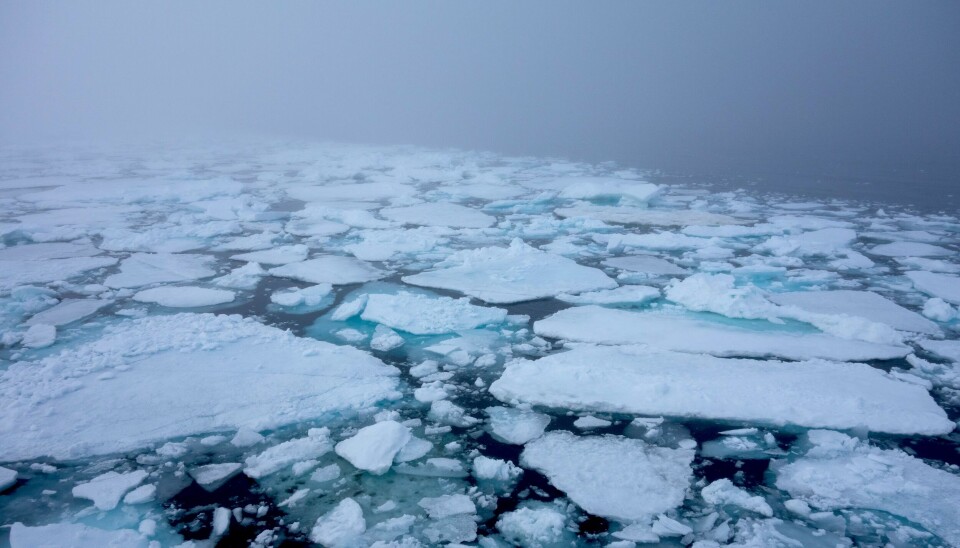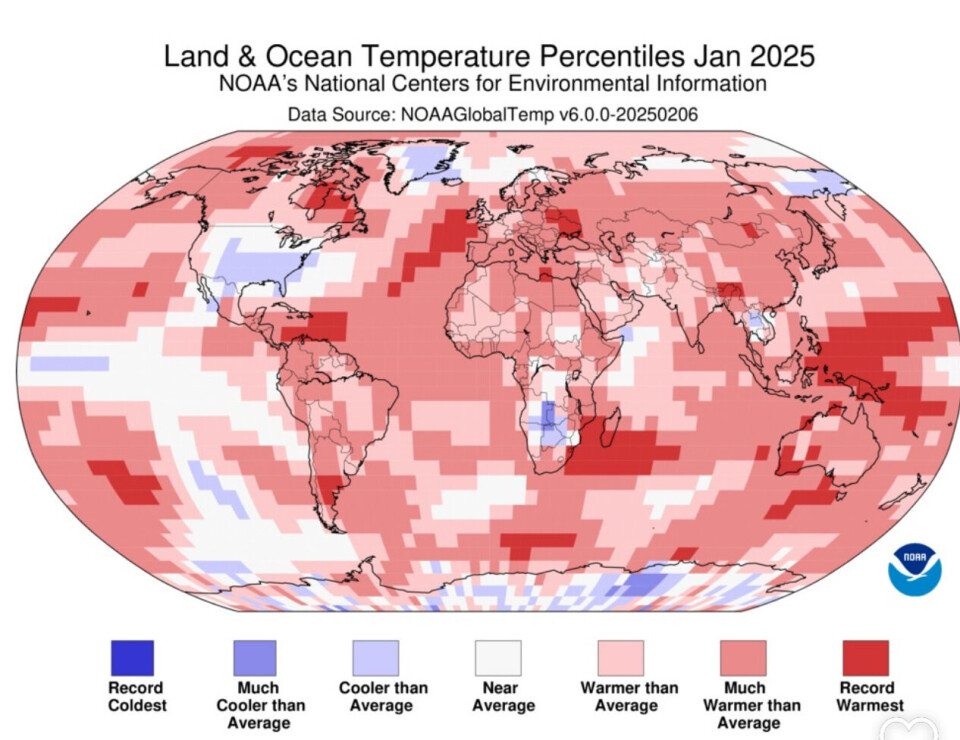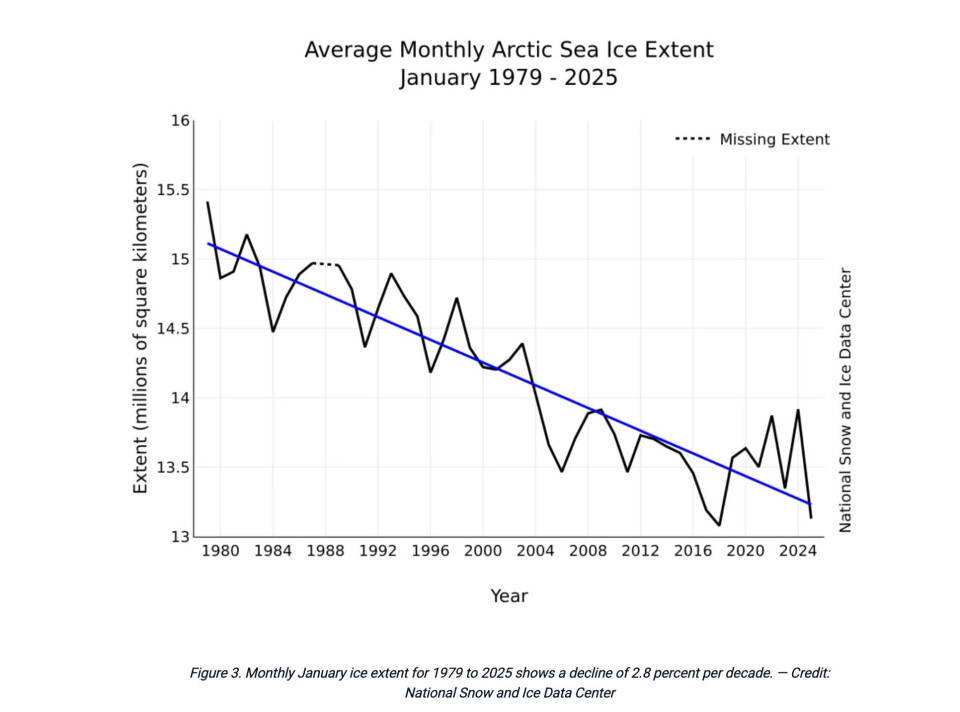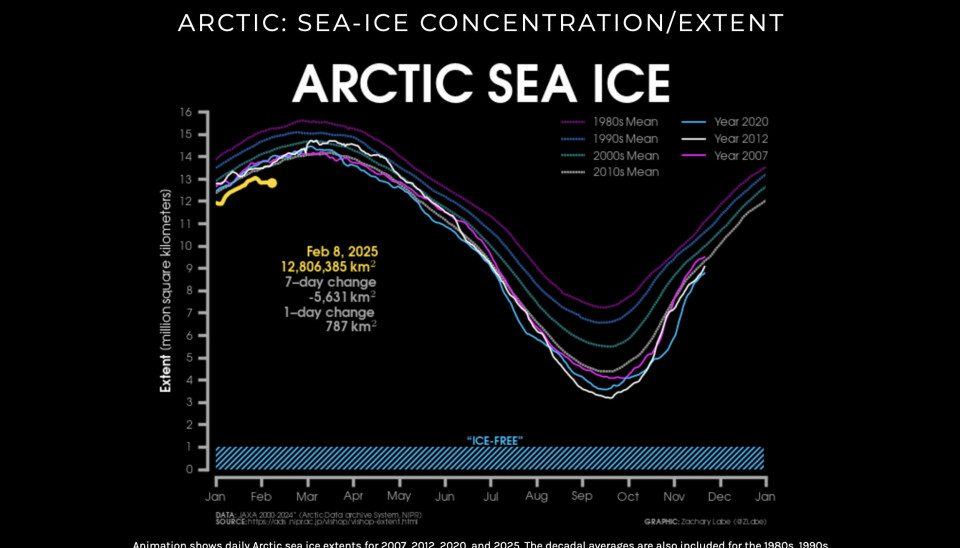
Second lowest January sea ice extent
As global warming reaches new heights, the extent of Arctic sea ice shrinks further.
In January 2025, global land and ocean surface temperatures were 1.33°C above the 20th-century average, according to data from the American National Oceanic and Atmospheric Administration (NOAA).

Researchers point out that January 2025 is the warmest January in NOAA’s 176-year global climate record, 0.03 degrees celsius above the previous record reached in 2024.
2025 has the potential to go down as the hottest year on record, warns NOAA.
"The Arctic is a place on the globe that is warming the fastest," Monica Winsborrow, associate professor at UiT The Arctic University of Norway, told the Barents Observer earlier.
What makes the Arctic so vulnerable to warming is that melting snow and ice exposes darker surfaces and thus increases the amount of solar energy absorbed in these areas.
This polar amplification of rising temperatures inevitably affects Arctic sea ice, which continues to shrink.

Arctic sea ice extent for January 2025 averaged 13.13 million square kilometres, the second lowest for the month in the satellite record, following a record low for December 2024, the National Snow and Ice Data Center reports.
The declining trend of January sea-ice extent seen in records since 1979 represents around 1.88 million square kilometres of lost ice, an area slightly larger than Alaska. According to the National Snow and Ice Data Centre, the Barents Sea and the Sea of Okhotsk were among the places where the ice extent has remained lower than in previous years.
Today, it's difficult to say how polar bears are coping with the loss of sea ice in the Arctic. Their distribution is affected by both the lack of sea ice and changes in snow cover on land, as they need snow on land to have cubs in winter," physical oceanographer Arild Sundfjord told the Barents Observer.
Furthermore, melting Arctic sea ice could have dramatic effects on ocean circulation, a recent study suggests.

Ongoing observations suggest further records may soon be broken. According to the latest measurements provided by climate change researcher Dr Zack Labe, the extent of sea ice at the beginning of February 2025 already looks to be the lowest ever on record.














